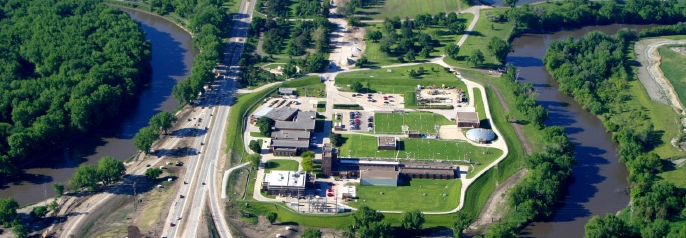Nitrate pollution and the cost of removing excess nitrates from drinking water are increasing at water utilities in the Mississippi River Basin, according to a study released by the Northeast-Midwest Institute. After a year of research in which ten years of data are analyzed, the study shows that levels of nitrate in source water exceeding EPA standards are occurring with increasing frequency, especially in the second half of the ten year period. The resulting increases in water treatment costs highlight the need to control for nitrate pollution, which the study found to be primarily a result of fertilizers used in agriculture.
Dr. Sridhar Vedachalam, Director of the Safe Drinking Water Program at the Northeast–Midwest Institute, notes that when levels of nitrate in water exceed standards for safe drinking water set by the EPA, water utilities are required to treat the water to remove the nitrates or find alternative sources of water. These options require both constructing expensive water treatment plants and significant new operating costs. “The resulting cost increases,” Dr. Vedachalam said, “inevitably find their way into consumers’ monthly water bills.”
The study focused on three water treatment plants in the Upper Mississippi River Basin – in Des Moines, Iowa; Decatur, Illinois; and Vermilion County, Illinois – and tracked nitrate levels and the contributors to these increasing levels as well as the associated costs in treating this source water to be drinkable. The research, part of NEMWI’s continuing research on water quality and safe drinking water, is supported with funding from the Walton Family Foundation which is committed to environmental protection, especially in the Mississippi River Basin.
The just released report includes a number of significant conclusions:
- There is a general increasing trend in the level of nitrate concentration over the 10-year period of study (2008-2017), with the intakes at the larger utility experiencing higher nitrate concentrations in comparison to the smaller utility intakes.
- A number of sources contributed to the increase in nitrate levels, including confined manure, atmospheric deposition, fixation and legume sources, urban land, and sewerage point sources. But the primary contributor to the increasing nitrogen levels was farm fertilizer, accounting for 51-62% of the total.
- Nitrate concentration exceedances (incidents where the levels surpassed EPA’s 10 mg/L limit) in the intake water increased over the study period, except for Decatur, IL, where it remained constant. Overall, Des Moines, IA’s Raccoon River intake location experienced the most number of exceedances – 80 days per year on average.
- Daily exceedances of nitrate MCL were significantly higher during the second half of the study period.
- A 45 percent reduction in the intake nitrate concentrations would virtually eliminate exceedances, but even a modest 10 percent reduction would bring down exceedances by 20-33 percent.
- Capital expense is a significant component of the overall cost of nitrate treatment at the three utilities. Smaller utilities face an undue burden of nitrate pollution in drinking water sources.
- In years when influent nitrate levels were the highest, utilities spent 4-9 percent of their overall operating budget on nitrate treatment.
The overall cost of nitrate treatment is a substantial financial burden on water utilities. Building a mid-sized plant alone costs around $10-15 million. One of the utilities that participated in the study anticipates a $15 million expenditure to double the size of its existing nitrate treatment plant.
The study and its implications is being brought to policy-makers as part of the Northeast-Midwest Institute’s ongoing policy education program, according to Dr. Michael Goff, President of the Northeast Midwest Institute. “These study findings regarding nitrate pollution and the threat posed to safe drinking water on the Mississippi River as well as the resulting increases in costs to consumers will be brought to the attention of U.S. Senators and Representatives from the region,” Dr. Goff stated. He noted that the findings highlight the importance of improved conservation practices and a proactive approach to controlling nitrate pollution even before it gets into the Mississippi River water supply.
This study lays the groundwork for determining the exact costs of nutrient loading and how that impacts consumers. It also highlights the necessity of addressing the issue of excess nitrates in water sources by limiting nutrient loading.
The full report prepared by the Institute is available here.
A brief summary of the report’s findings and policy implications is available here.
Details on the May 23rd Capitol Hill briefing on the study and its policy implications are available here.
For more information, contact Dr. Sridhar Vedachalam, Director of the Safe Drinking Water Policy and Research Program at the Northeast-Midwest Institute.
